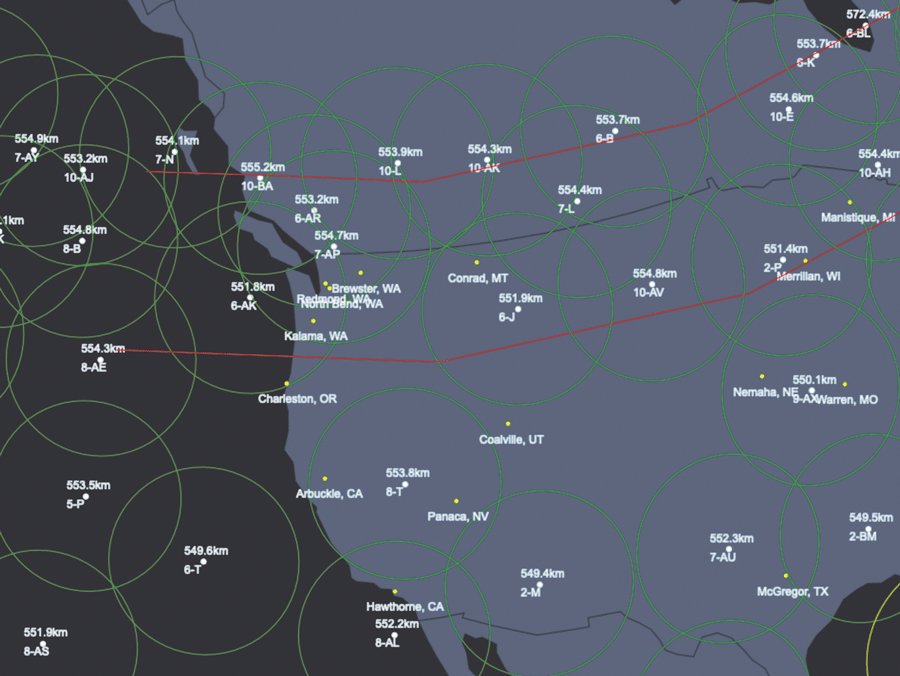
SpaceX announced plans in 2015 to create a satellite internet service, Starlink, and with limited beta testing now in progress, that reality might not be far away.
The goal of Starlink is to provide low-cost satellite internet access to even the most remote places on Earth at speeds previously only available in urban areas. SpaceX CEO Elon Musk has boasted the service will be capable of providing internet speeds of 50 to 150mbps (megabits per second) with a latency of only 20 to 40ms (milliseconds). SpaceX expects latency to decrease as more satellites come online.
Latency is the delay between a user’s action and a web application’s response to that action, often referred to in networking terms as the total round trip time it takes for a data packet to travel. High latency is especially detrimental to online activities such as video conferencing, streaming media and online gaming.
Mark Cockerill, a Key Peninsula Community Council director who chairs its broadband project committee, is cautiously optimistic about what Starlink could do for Key Peninsula residents.
“It’s probably too early to tell, but this could be a game changer for some residents,” Cockerill said. “Of course, cost is still going to be a hurdle.”
Starlink’s aptly named beta test, “Better Than Nothing Beta,” costs participants $500 for the equipment plus $99 per month. That’s still considerably less expensive than getting a landline to remote properties, Cockerill said, and prices are likely to go down once the service is fully public.
Starlink isn’t the first satellite internet provider. Some Key Peninsula residents might be familiar with its competitors, HughesNet or Viasat. While Viasat offers plans with speeds from 12 to 100mbps, HughesNet offers 25mbps for all of its plans. Both of these services have average latencies of approximately 600 to 700ms.
By comparison, latency for a cable modem can often be 5 to 40ms; 10 to 70ms for a DSL modem; 100 to 220ms for a dial-up modem; and 200 to 600ms for a cellular link. Data travels at approximately 120,000 miles per second through a network, or 120 miles per millisecond. The longer the route, the greater the latency.
There are several reasons for the disparity between Starlink and existing satellite internet services, but the big one is proximity. Traditional internet satellites are stationed in geosynchronous orbit, which is roughly 22,200 miles from the Earth’s surface. In contrast, Starlink satellites are being positioned in low Earth orbit (LEO), only 340 miles from Earth’s surface.
Satellites at HEO are able to service a larger area, which has traditionally made them the more economical option. To provide effective service from LEO requires many more satellites. However, SpaceX has put an enormous effort into developing smaller, less expensive satellites as well as cheaper methods of transportation to provide the massive satellite constellation required for this endeavor.
After successful prototype tests, SpaceX began launching their V1.0 satellites in November 2019. There are currently over 800 Starlink satellites in orbit, but Musk said this is only the beginning.
SpaceX expects to launch 1,440 satellites by 2022, with plans to launch up to 12,000 in the next nine years. Musk said that as a fully-realized global network, Starlink could eventually include roughly 42,000 satellites. This has some experts concerned about overcrowding Earth’s orbit, which could make future space operations exponentially more difficult.
Here, on the ground, there are other practical concerns over Starlink’s effectiveness. Like all satellite internet services, customers will need a clear line of sight to the sky to make a stable connection to host satellites. Cockerill said this will likely be a challenge for KP residents in more heavily wooded areas. Bad weather can also affect a satellite connection.
“Starlink isn’t going to be a silver bullet for the KP,” Cockerill said. “Not everyone will be able to afford it, or be in the right spot to use it.”
Cockerill is exploring ways to make Starlink more accessible for KP residents. One idea he’s advocating to KPCC is to procure a couple of Starlink satellite dishes to loan residents to test the service. This could allow people to decide if Starlink will be a good fit for them before investing in the equipment themselves.
Peninsula School District already loans several hundred wi-fi hotspots to families with internet access challenges. PSD Executive Director of Digital Learning Kris Hagel said the district would like to be able to provide Starlink to families without internet access or cell coverage.
“The challenge of bridging the digital divide in the KP will have to be multifaceted,” Cockerill said. He’s still collecting data from a broadband survey distributed in early November and hopes the results will help leverage support from cable companies and Pierce County.
UNDERWRITTEN BY THE FUND FOR NONPROFIT NEWS (NEWSMATCH) AT THE MIAMI FOUNDATION, THE ANGEL GUILD, ADVERTISERS, DONORS AND PEOPLE WHO SUPPORT INDEPENDENT, NONPROFIT LOCAL NEWS